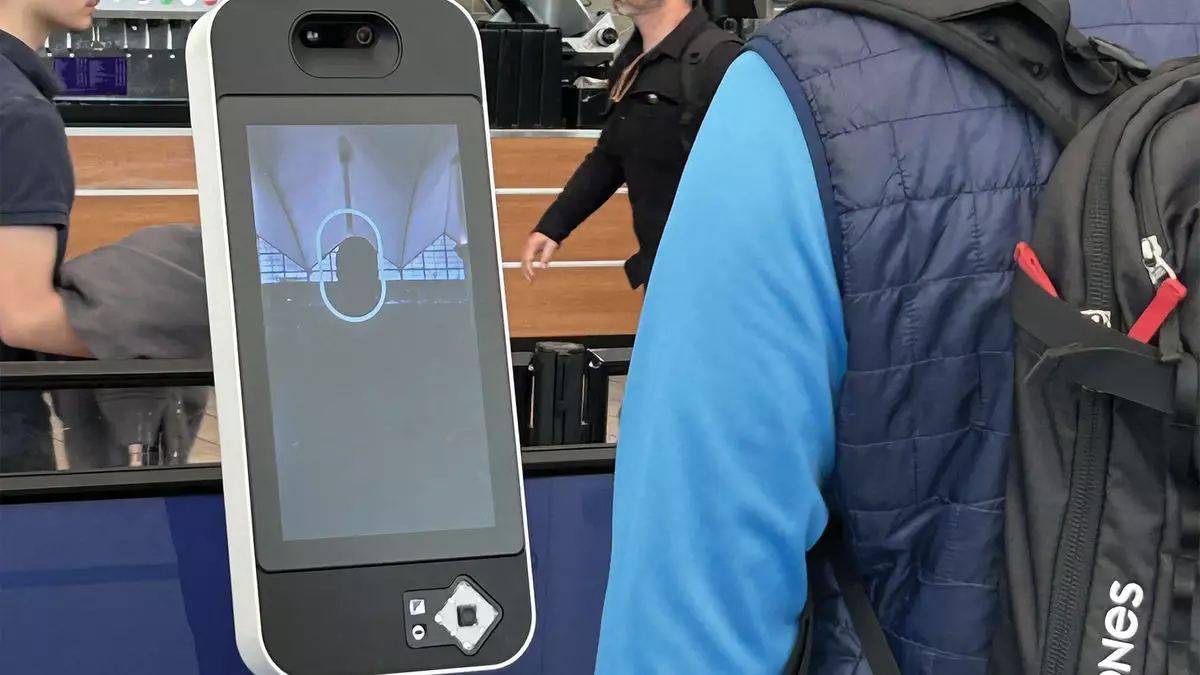In an era where technology is redefining the norms of travel, Clear, a private airport security screening company, is at the forefront of enhancing traveler experiences. The rollout of its advanced facial recognition technology, EnVe pods, marks a significant leap in airport security procedures. With the ambitious goal of completing the deployment in early April, Clear is transforming the airport experience for millions. As of mid-March, 70% of Clear’s vast member base—over 30 million individuals—had embraced this groundbreaking technology, showcasing not only its popularity but also its potential to significantly streamline airport processes.
This technological uplift could revolutionize the efficiency of identity verification at airport checkpoints. In stark contrast to older systems that rely on processing iris scans or fingerprints, the EnVe pods dramatically reduce verification times. Travelers are now able to have their identities confirmed in mere seconds, presenting a welcome change in a landscape often fraught with long lines and extensive waiting times. Under the stewardship of Kyle McLaughlin, Clear’s executive vice president of aviation, this innovation is poised to reshape air travel’s security narrative.
The Race for a Frictionless Airport Experience
Clear’s recent enhancements represent more than just upgraded technology; they encapsulate a vision for a seamless and frictionless travel experience. This is echoed in McLaughlin’s assertion that customer experience ranks as the top driver of retention. As airports become increasingly congested, the demand for rapid, reliable, and less intrusive forms of identity verification becomes paramount. Not only is the EnVe system easier for travelers, but it also enhances overall airport efficiency, allowing staff to redirect their focus towards improving other aspects of airport operations.
However, Clear’s innovations do not exist in a vacuum. The Transportation Security Administration (TSA) is also stepping up its game with its Touchless Identity Solution program, which seeks to allow PreCheck members to breeze through airport checkpoints without any physical interaction. This system mirrors Clear’s use of biometrics, reducing touchpoints significantly. The government’s efforts to modernize airport security procedures present a two-fold challenge and opportunity for Clear—while they may face competition, the need for efficiency and speed is more urgent than ever.
Clear versus TSA: A Competitive Landscape
While both Clear and TSA’s initiatives aim to ease frustrations commonly associated with airport security, the landscapes are markedly different. Clear’s implementation is already widespread, with 166 lanes active across numerous airports. Conversely, the TSA’s rollouts have faced substantial hurdles, including potential privacy concerns surrounding biometric data and slower adaptations to change. Though the TSA’s plans for touchless lanes are promising, they remain constrained by bureaucratic processes and the need for meticulous coordination among various stakeholders.
McLaughlin’s confidence in Clear’s innovation suggests a belief that travelers will choose their service for predictability and consistency. The mention of additional advancements, such as the introduction of automated entry gates, reinforces Clear’s commitment to leading in this high-stakes domain. By ensuring that members experience the same quality service regardless of location, Clear aims to differentiate itself amid increasing scrutiny and competition from governmental efforts.
The Concierge Service: Elevating the Travel Experience
Beyond biometric advancements, Clear is also introducing premium services to cater to specific demographics. The Concierge Service, targeted primarily at senior citizens and families with young children, enriches the traveler experience by providing personalized assistance from the moment they arrive at the airport. The service has quickly become a beloved offering, priced affordably at $49 for an escort through the Clear lane and between $99 and $149 for an escort to the gate.
This not only allows Clear to serve a broader audience but also aligns with the growing trend of personalized customer service in travel industries. Travelers now actively seek experiences that prioritize comfort and convenience, a sentiment clearly addressed by this newly launched service. The potential expansion of such offerings throughout various airports illustrates the company’s intent to remain responsive to its members’ needs.
Clear stands at a defining moment in its trajectory. As it navigates the dual challenges of evolving consumer expectations and growing competition from TSA-led initiatives, Clear’s focus on innovation, rapid processing, and premium services places it in an advantageous position. In the seemingly endless quest for efficiency and comfort in travel, Clear’s advancements reflect a bright future, not only for the company but for all who traverse the skies.


Leave a Reply